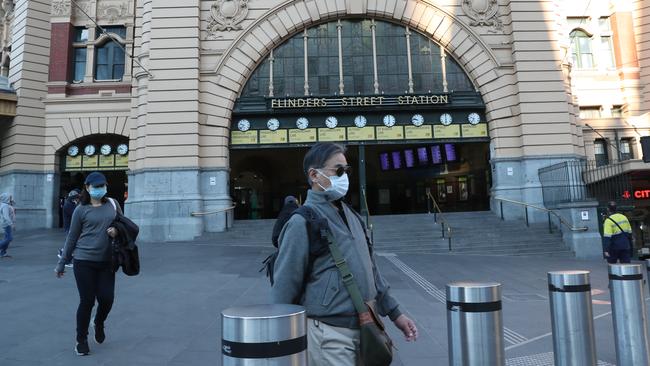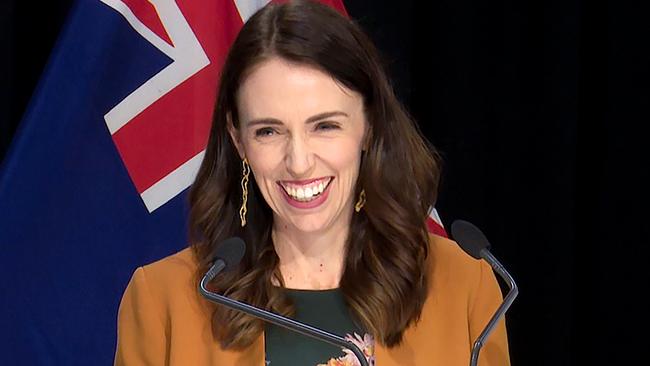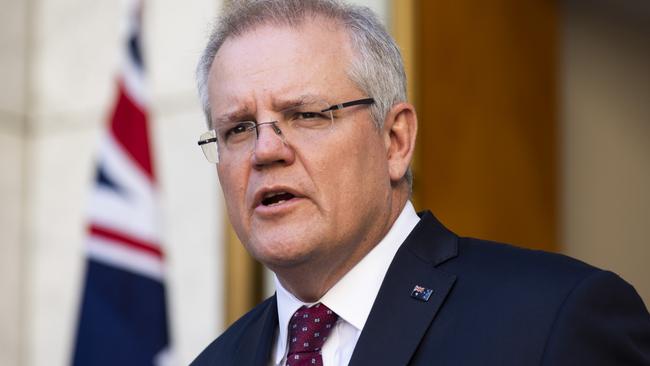Why Victoria’s virus approach signals looming Groundhog Day
Victoria has adopted a suppression approach to tackling the coronavirus pandemic but some experts are calling for a tougher lockdown similar to New Zealand’s. But is elimination still possible in Australia?

Some Victorians will cast envious glances eastwards as they fret about the rising numbers of COVID-19 cases.
The virus has officially been “eliminated” in New Zealand. Wednesday was the 75th day since the last case was acquired locally through an unknown source.
In June, New Zealand Prime Minister Jacinda Ardern “did a little dance” on hearing there were no active cases — the severe lockdowns strategy had worked. The Kiwis have striven and succeeded to eliminate the virus.
New Zealanders no longer have to socially distance. Limits on gathering sizes have been consigned to history.
The view to the west is similar. Life in Perth, as with Auckland, is a new version of normal. Western Australia has no limits on gatherings and 30,000 people can go to the football.
“Reimposing restrictions like Victoria has had to is the last thing I ever want to do,” Premier Mark McGowan said.

Melbourne shares an unfortunate perch of renewed lockdowns with Beijing, China, and Leicester in England.
This city’s tribulations have reignited the debate about strategies. Some epidemiologists argue that Melbourne’s perilous position offers an opportunity to reset.
Australia has employed a national approach of suppression, as opposed to elimination. Yet the approach raises questions, given the shifting uncertainties of Melbourne’s circumstances and the practical difficulties of identifying and isolating the close contacts of every case.
Prime Minister Scott Morrison reiterated the suppression approach on Wednesday. He said aiming for elimination could cause more harm than it prevented.
“You don’t just shut the whole country down, because that’s not sustainable,” the Prime Minister said. “You’d be doubling unemployment, potentially even worse.
“The cure would be worse than what arguably would not be delivered anyway, because as we have seen in the outbreak in Victoria, it came from a breach of quarantine.”
Suppression certainly has advantages. It reduces the likelihood of an overwhelmed health system. It is also viewed as ameliorating the economic impact of the health response.
But it has disadvantages, too. Second waves — or at least spikes — are inevitable.

Next week, next month and next year, there will be outbreaks of virus spread. It will go on and on and on.
The successful measures of states such as WA tend to smudge the either/or debate.
Officially, elimination means four weeks without a new case. Tasmania, Queensland, South Australia and Western Australia have applied suppression models so well that they enjoy elimination results.
The pay-off is they must keep their borders closed to stop the virus being imported.
Victoria is in bother, in part because neither strategy would have stopped the spread from the bungled quarantine hotels program.
On Wednesday, Premier Dan Andrews was not foreshadowing tighter lockdowns, but said infections could rise if people ignored the current restrictions.
Victoria’s Chief Health Officer Brett Sutton said this week that further lockdown restrictions in Victoria might have to be considered.
“We can’t rule anything out if there aren’t sufficient mechanisms to drive down transmission,” he said.
He said eliminating the virus would be hard given the present rate of transmission.
Yet some experts say an elimination approach could help avoid the gnawing unknowability of case spikes, and unite the nation in being free of community spread.

Should Melbourne follow New Zealand, which endured five weeks of Stage 4 lockdowns more severe than any measures imposed in Melbourne so far?
Economist Tom Kompas, a professor of environmental economics at the University of Melbourne, has said that a “go early, go hard” approach is of most benefit. He has argued that an extra week of restrictions in June could have placed Australia for the elimination of the virus.
Epidemiologist Professor Tony Blakely has also argued for tough lockdowns, saying on Channel 9: “It will be much better to have a go at eliminating the virus and all of Australia can come together and control the borders with quarantine.”
GP and mathematician Dr David Kault believes elimination is still possible as Australia is at a “tipping point”.
Dr Kault, a senior lecturer at James Cook University, said that if lockdown was lifted when numbers were low, but not zero, then control over the virus would become “brittle”.

Yet national Deputy Chief Medical Officer Nick Coatsworth has said that elimination is “unrealistic” given climbing case numbers around the globe. He advocates a “suppression to the point of absence of community transmissions” approach that balances public health and economic progress.
There are bright spots in the pursuit of a vaccine, which is the end point for the suppression strategy.
COVID-19 shares qualities with smallpox, the only disease to be eradicated, in that it is thought that only 60 per cent of the population would need to be immune to eradicate the pathogen.
The question is when a vaccine will arrive. Until then Melbourne faces Groundhog Day scenarios of fresh threats and abrupt lockdowns.
MORE NEWS
MELBOURNE’S NEW VIRUS HOTSPOTS IN THE WEST
RCH STAFF TEST POSITIVE, WOOLIES STORE FORCED TO CLOSE

